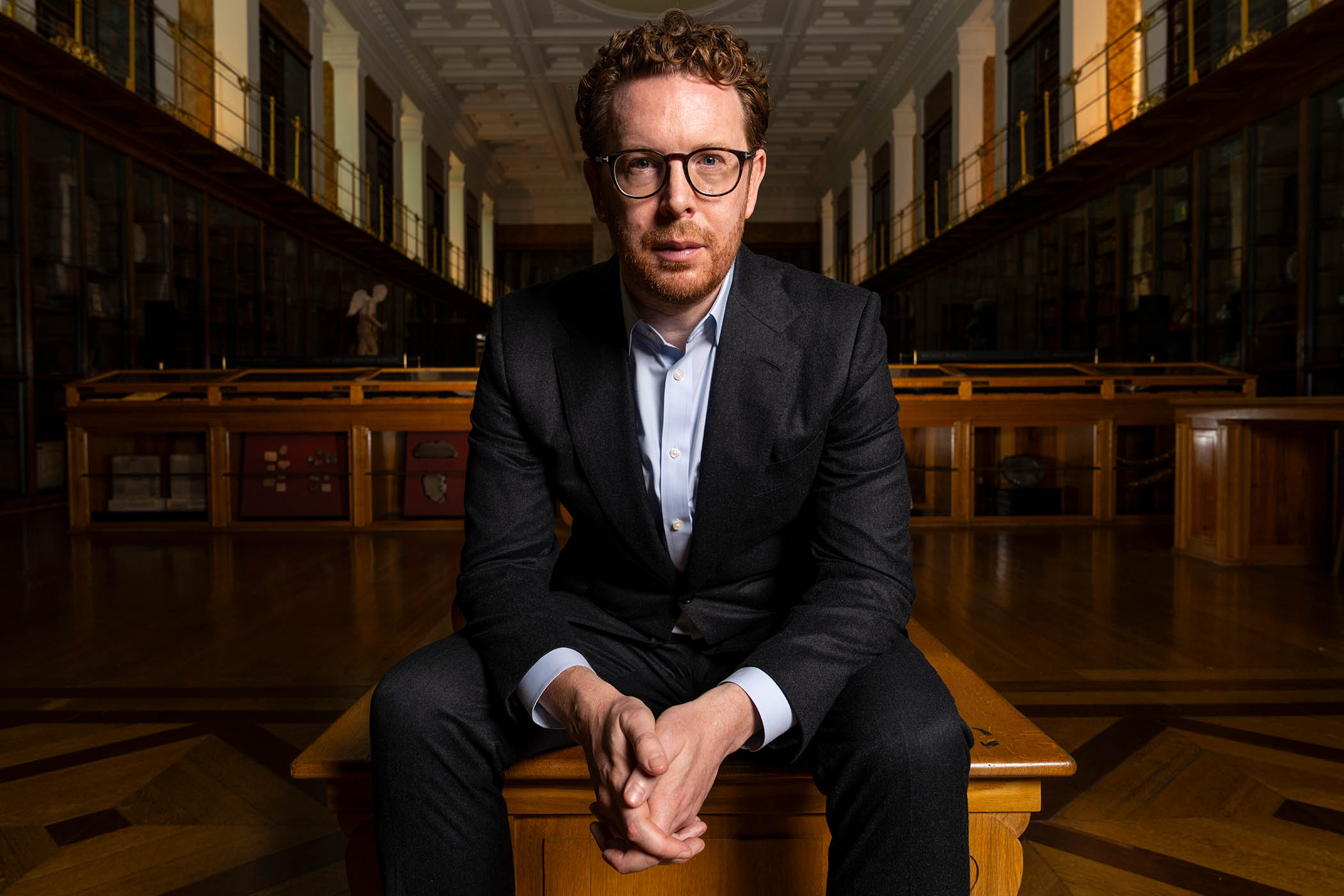Dr Nicholas Cullinan, 47, was appointed director of the British Museum in London in March 2024, having transformed the National Portrait Gallery in his nine years there. He was born in the US, but moved with his family to Hebden Bridge, West Yorkshire, when he was young. After completing a PhD at the Courtauld, he worked as curator of contemporary art at Tate Modern and the Metropolitan Museum of Art in New York. Among his new initiatives – timed to coincide with Frieze art fair and the London film festival – is the inaugural, star-studded British Museum ball, to be held next week.
Tell me about the ball. This is your idea?
I’d been thinking about it since before coming to the British Museum. I’ve always talked with colleagues about how there’s a role in London for a really big event that would host people from all around the world. This is the place where you have the scale to do that. And it makes sense that we’re doing it to raise money to support all the many different initiatives of the museum that involve collaborations across the world.
The Met Gala in New York is the obvious parallel?
It’s about creating something that’s unique. It’s really to show that London is welcoming, creative, dynamic, inclusive, which feel like really important messages to give right now. We created the ball committee with artists we’ve worked with: Hew Locke, Grayson Perry, Tracey Emin and others. We have architects: Norman Foster, who designed the Great Court; Lina Ghotmeh, who is redesigning our Western Range galleries. We have writers like Elif Shafak. We wanted to make it about excellence in all these different endeavours, all the arts, politics, academia, so it’s not just focused on celebrity.
Having said that, you are mates with Courtney Love. How did that come about?
In the 90s, when I was growing up, I really admired her bravery. I thought there was a lot of misogyny directed at her, especially when she had to raise her daughter after her husband killed himself. I met her in 2017. They say don’t meet your heroes, but she definitely proved that wrong, and we just became friends kind of right away.
I’m lucky I grew up in that mould of the white working classes that privileged education above all else
The museum has long been this peerless engine of soft power for Britain. Do you feel that the arguments around repatriation and decolonisation have undermined that?
From my perspective, an encyclopedic museum has an even more urgent role to play in things now, but that doesn’t mean that it’s off the hook. These are really important arguments. I’d say though at a time when there’s more and more nationalism, and individuals are being put more into echo chambers, it’s more important than ever to have forums where we are all brought together and confronted with different histories, different cultures, different worldviews. And to have them all under the same roof.
Your argument about repatriating some of the collection [including the Parthenon marbles], as I understand it, is that there is a “third way” between keeping things and returning them, and that is a more extensive process of lending and sharing. Is that right?
What we say in public is exactly what’s happening in private. I don’t know how many years I’ve got here, but I think lobbying to change an act of parliament [so that the museum can legally repatriate objects] is not what I should focus all my energy on. I can do a huge amount instead in trying to create partnership in reciprocal loans, and I think we should do that as ambitiously, as radically as possible.
Where do you stand on the issue of toppling statues?
I don’t think it’s ever a good idea to deny history. I think it’s always really important to face your own history honestly, either as an individual or as a nation. The British Museum is a museum of two million years of human history. We could sit all day and talk about examples here of the most extraordinary genius, inspiration, generosity, and also about the worst things that people are capable of. I think it’s important that those two things are side by side, because that’s a true picture of what human beings are like.
When did you first come to the museum?
I first came here when I was four. I was born in America. My parents were British, and when I was four they quit their jobs and we moved back here. My dad was a construction worker, and my mum was a nurse and did different things including looking after four kids. One of my early memories, which is actually quite traumatic, was of us in one of those little hotels round the corner [from the museum] on Gower Street. Everyone was uneasy about whether they had made the right decision to come back to England. And my mum brought me to the British Museum and showed me around. I have a memory even then of a feeling of reassurance, like: you’re part of a much bigger picture.
You were home schooled?
Yes, my parents would take me to museums near where I grew up in Hebden Bridge; so, often to Manchester City Art Gallery, Leeds, Liverpool, very occasionally London. I’m really lucky that I grew up in that mould of the white working classes of this country that privileged education above all else. My grandfather from Rochdale went to work in a cotton mill aged 14, but also put himself through night school. So my uncle was called Kit after Christopher Marlowe. There was no money, but we had libraries and trips to free museums and good music. If you look at the history of the working classes in this country, that is a big part of it. A lot of it has been lost, but we all have a role to play in trying to correct that.
Back to the ball. Do you have your outfit sorted out?
I do now. It took some time and I don’t get much time to think about outfits, to be honest. It’s something quite boring. I’m not trying to be the centre of attention, but I will definitely make a nod to our pink theme…
Photograph by Antonio Olmos for The Observer

